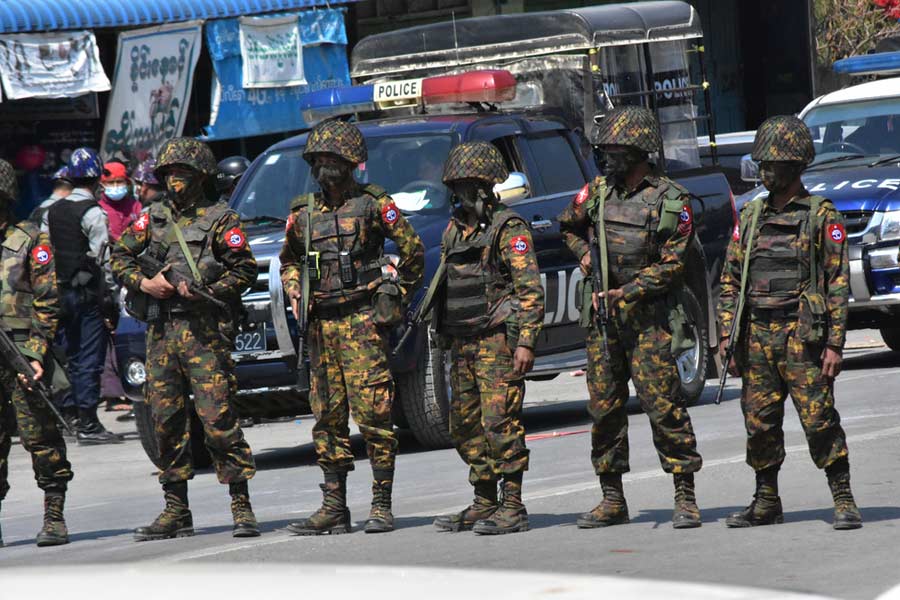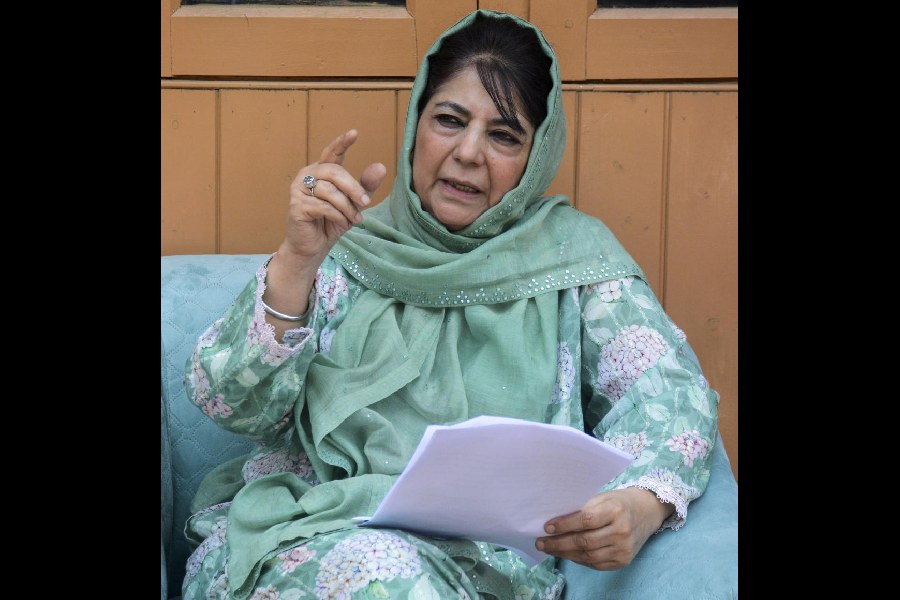
Just about seven years ago I had the privilege of being on a show with Gordon Ramsay as part of a chain of episodes titled Gordon’s Great Escape where, in each episode, he visits the less known parts of India to discover and learn about their cuisine.
According to the script in the episode involving me, we meet in the middle of a weekday in BBD Bag, which is serious office country when almost everyone has lunch off the street, cooked daily and fresh, and immeasurable in terms of variety, taste and edibleness. And no contestants as far as value for money is concerned.
I welcome him to “chaotic Calcutta”, we have some luchi and veggies, he says how good it tastes, and then going by the script we talk about his impending visit to Nagaland.
His production team had met me a few months before and told me that I had to, of course in a friendly and amiable manner, challenge him to pick up a few recipes and cook them on R.N. Mukherjee Road and see if he sells out.
Back from Nagaland, where the footage I saw much later shows that he has been a guest of people who still live in a traditional way, even going out hunting for venison with bows and arrows, he cooks a few dishes on the street of Calcutta office country of fish and poultry, using bamboo shoots and other ingredients that are a part of Naga and Assamese cuisine, and, for that matter, of every state in that beautiful part of the world, he sells out big time and I lose. Nothing new about that.
Lucky to have been, thanks to our music, honoured guests in the Northeast since 1986 when we went to play first in Shillong and then a small hamlet set against the hillside in a perfect place in Nagaland called Mokokchung,which I thought was straight out of a story like The Hobbit or The Lord Of The Rings, there is no end to the tales we can tell of super, simple home-cooked food which never tampers with what nature made by over-spicing or making anything too rich. Needless to say, they love music and any musician who has been a guest there can never forget the hospitality and the experience.
Cut to Sunday, March 13, 48/1B Gariahat Road. A pop-up lunch of exclusively Naga food. Was I there? One guess.
A small pamphlet was handed out to all the lucky ones who made it there: ‘Hill Tribe Cuisine. Discover the aromas from the Ao Tribe, Nagaland with the Ao sisters, Akumla and Alila’.
The Ao tribe is one of Nagaland’s 17 tribes and one of the more well-known. Each tribe has its own language and style of food. Mind-boggling.
The menu? A normal Ao meal would include rice, meat (either dry or fresh pork with bamboo shoots), boiled vegetables and a spicy chutney with raja mircha (Nagaland’s fabulous chilli which would give the Mexicans a run for their money).
But that day being a special occasion, the fare was more elaborate. Two kinds of rice — Black (jet black, no kidding, each grain wholesome and juicy) and Joha — very close to what we know as Gobindobhog. There was a dal made of kolar beans which are only available in Nagaland, and there were four main courses: Pork with Fermented Bamboo Shoots, Smoked Pork with Anishi (fermented yam leaves), Stir-fried Beef with Naga chilli, and Chicken with Rice Powder (amusu). The chutney was a soul-stirring mix of fermented crab meat, black sesame seeds, fermented soya beans and small freshwater fish which in Bengal would be called punti maachh, dried and also fermented. Add griddle-roasted green chillies and tomatoes, make all these ingredients into a well blended and balanced paste, and we have it. For dessert, Fruit Custard.
Sincere effort to do things correctly and authentically was in evidence. I asked, and I was told that to smoke the pork, 4”-5” cuts of boneless pork, just less than two inches wide, were suspended over a wood fire at a height of about a foot above the flames, for as long as a whole day. The stir-fried beef was cooked on a slow fire for an hour, stirring and turning the meat (diced into bite-sized pieces), at regular intervals.
There was also boiled cabbage and the importance given to greens, and the abundance of superb greens in the hills and valleys of Nagaland is remarkable. Cooking time, boiling or steaming: three minutes max. Result, crunchy veggies and the water in which they were cooked served as a stock to put in the rice.
Steaming and smoking are simple cooking methods universally used in Nagaland. In 2010, I was at The Hornbill Festival at Kohima. All sorts of food was on offer at many stalls set up there. I had some delicious smoked porcupine meat. The texture not at all fibrous, and very smooth. I wanted to try queen bee also, but never got around to it.

It is easy to continue about the cuisine of the Northeast with each state having magic of its own. But if the Ao sisters visit Calcutta at least 10 times a year, and their energy infects other people from other Northeast states, the sky would be the limit for foodies in Calcutta and a classic, no-joking culture of good food, clean, healthy and nutritious, would be ours for the asking.











